at TA = 25°C,
VS = ±20V, VCM = VS / 2, RLOAD =
10kΩ connected to VS / 2, and CL = 100pF (unless otherwise
noted)
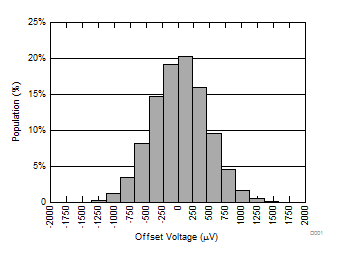 Figure 5-1 Offset Voltage
Production Distribution
Figure 5-1 Offset Voltage
Production Distribution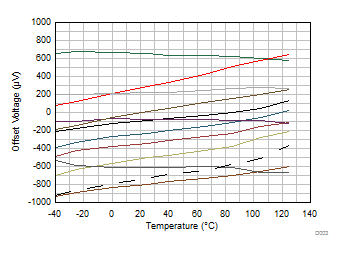 Figure 5-3 Offset Voltage
vs Temperature
Figure 5-3 Offset Voltage
vs Temperature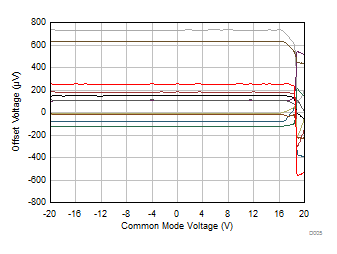 Figure 5-5 Offset Voltage
vs Common-Mode Voltage
Figure 5-5 Offset Voltage
vs Common-Mode Voltage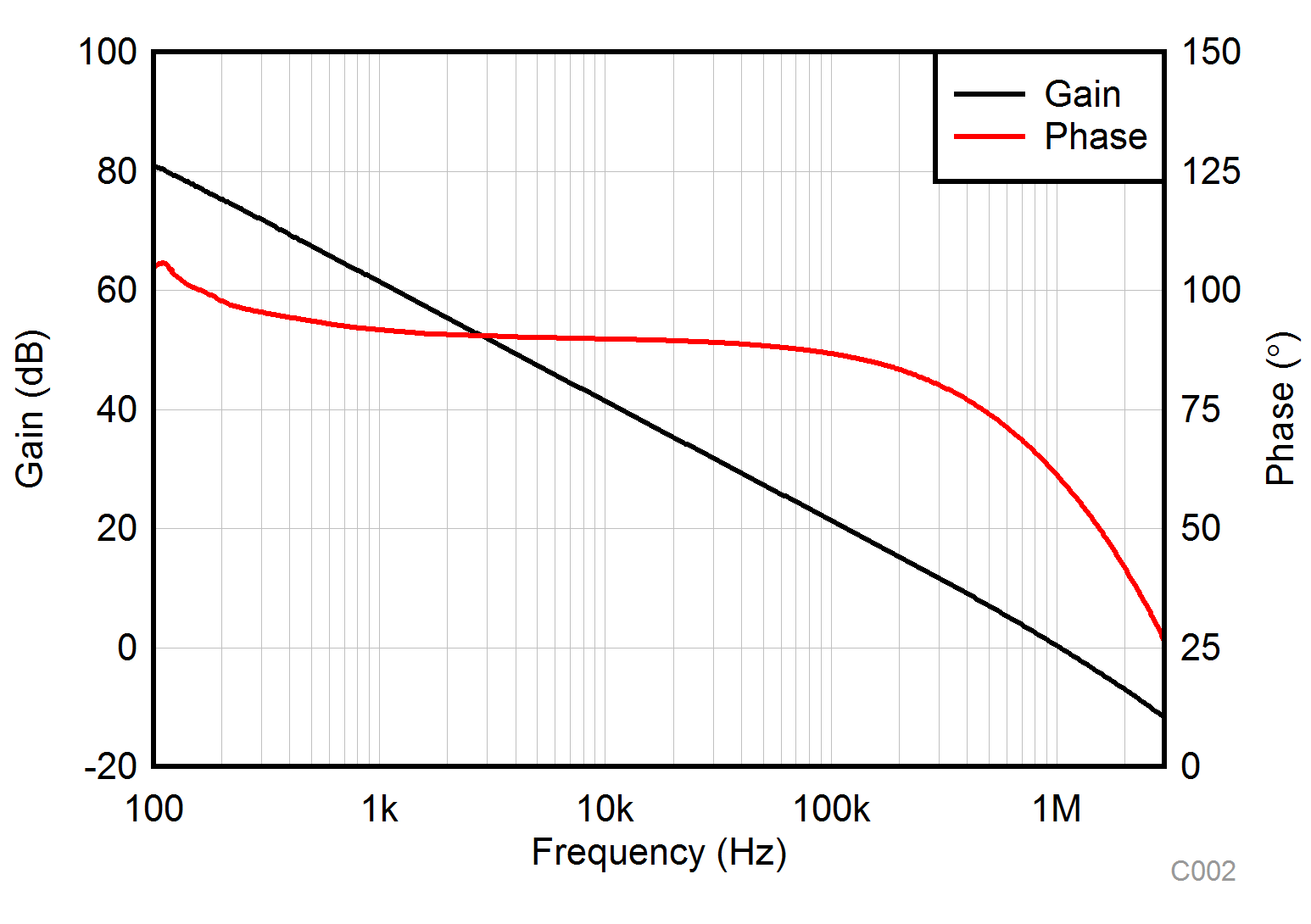 Figure 5-7 Open-Loop Gain
and Phase vs Frequency
Figure 5-7 Open-Loop Gain
and Phase vs Frequency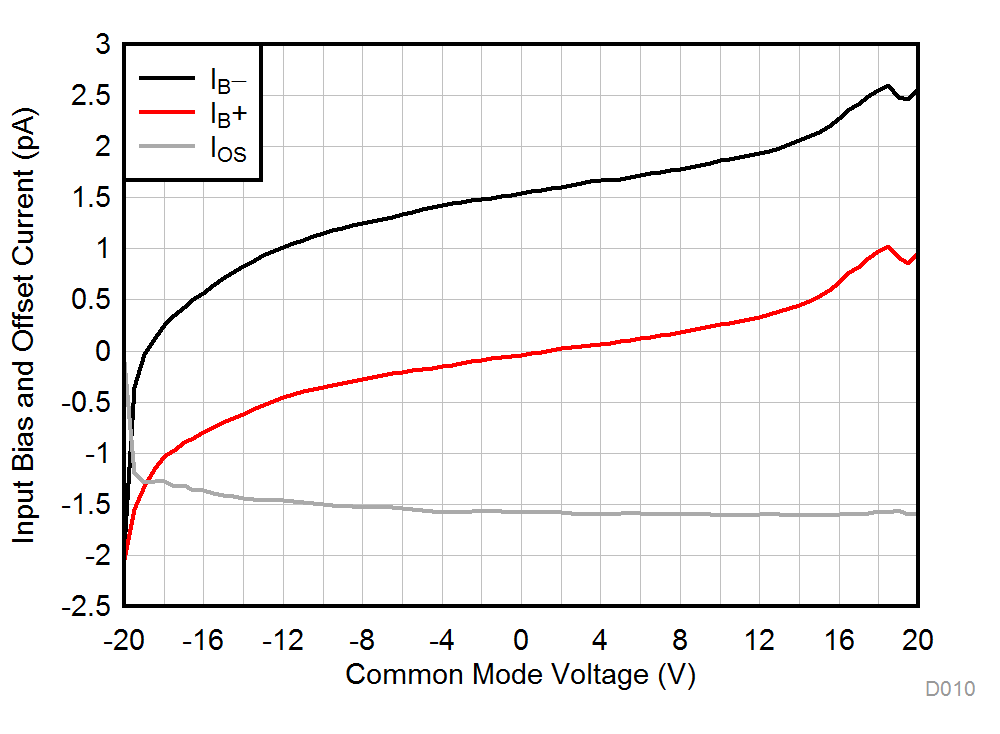 Figure 5-9 Input Bias
Current vs Common-Mode Voltage
Figure 5-9 Input Bias
Current vs Common-Mode Voltage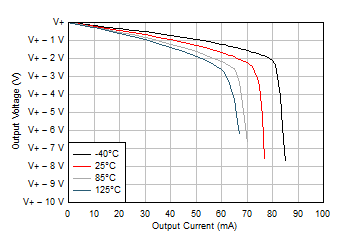 Figure 5-11 Output Voltage
Swing vs Output Current (Sourcing)
Figure 5-11 Output Voltage
Swing vs Output Current (Sourcing)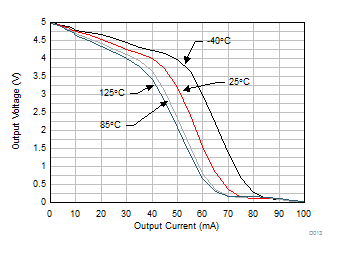 Figure 5-13 Output Voltage
Swing vs Output Current (Sourcing)
Figure 5-13 Output Voltage
Swing vs Output Current (Sourcing)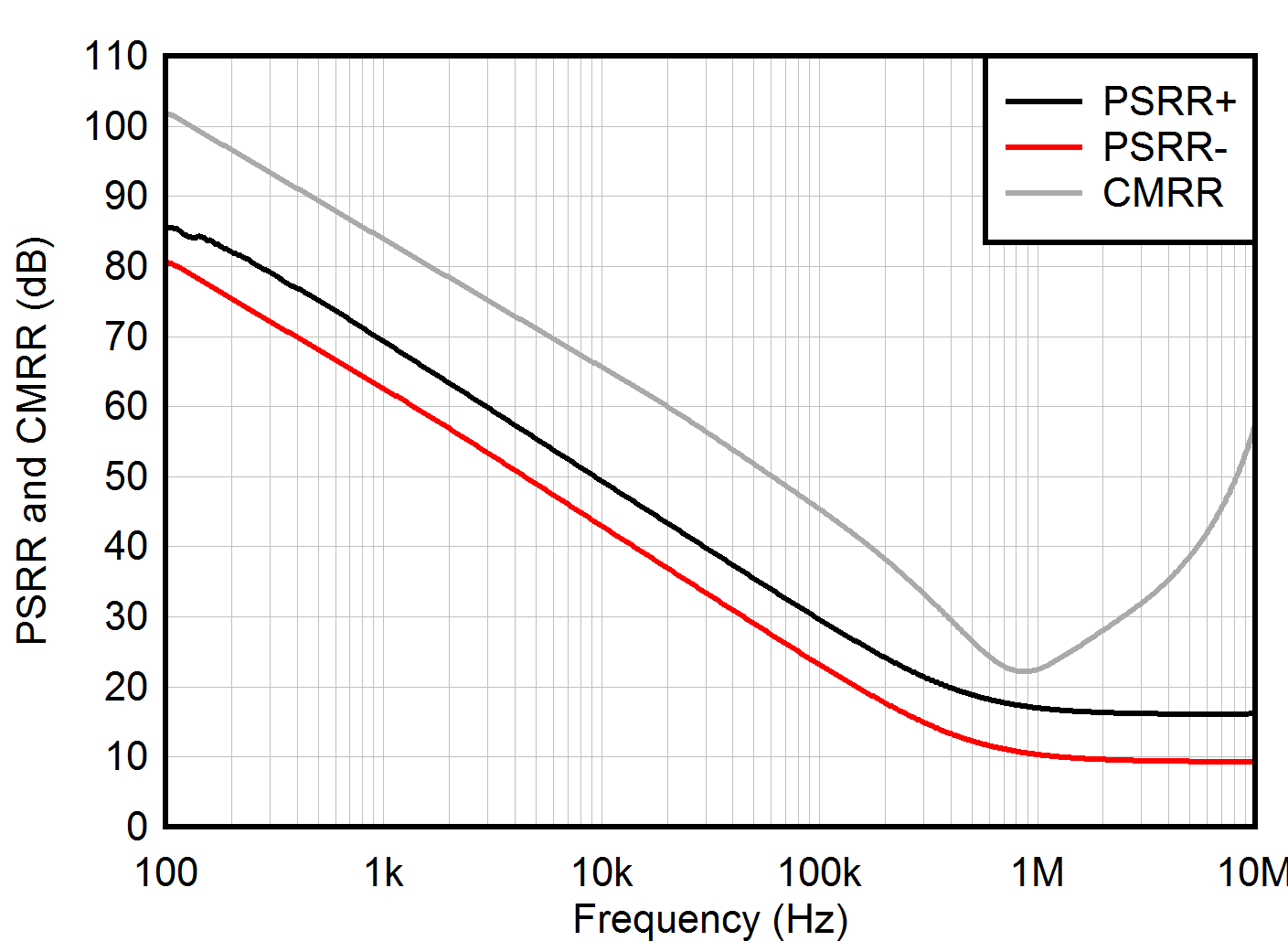 Figure 5-15 CMRR and PSRR
vs Frequency
Figure 5-15 CMRR and PSRR
vs Frequency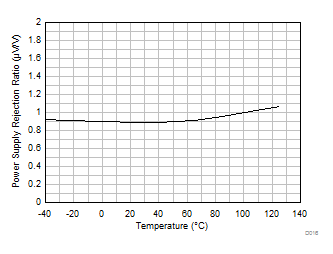 Figure 5-17 PSRR vs
Temperature (dB)
Figure 5-17 PSRR vs
Temperature (dB)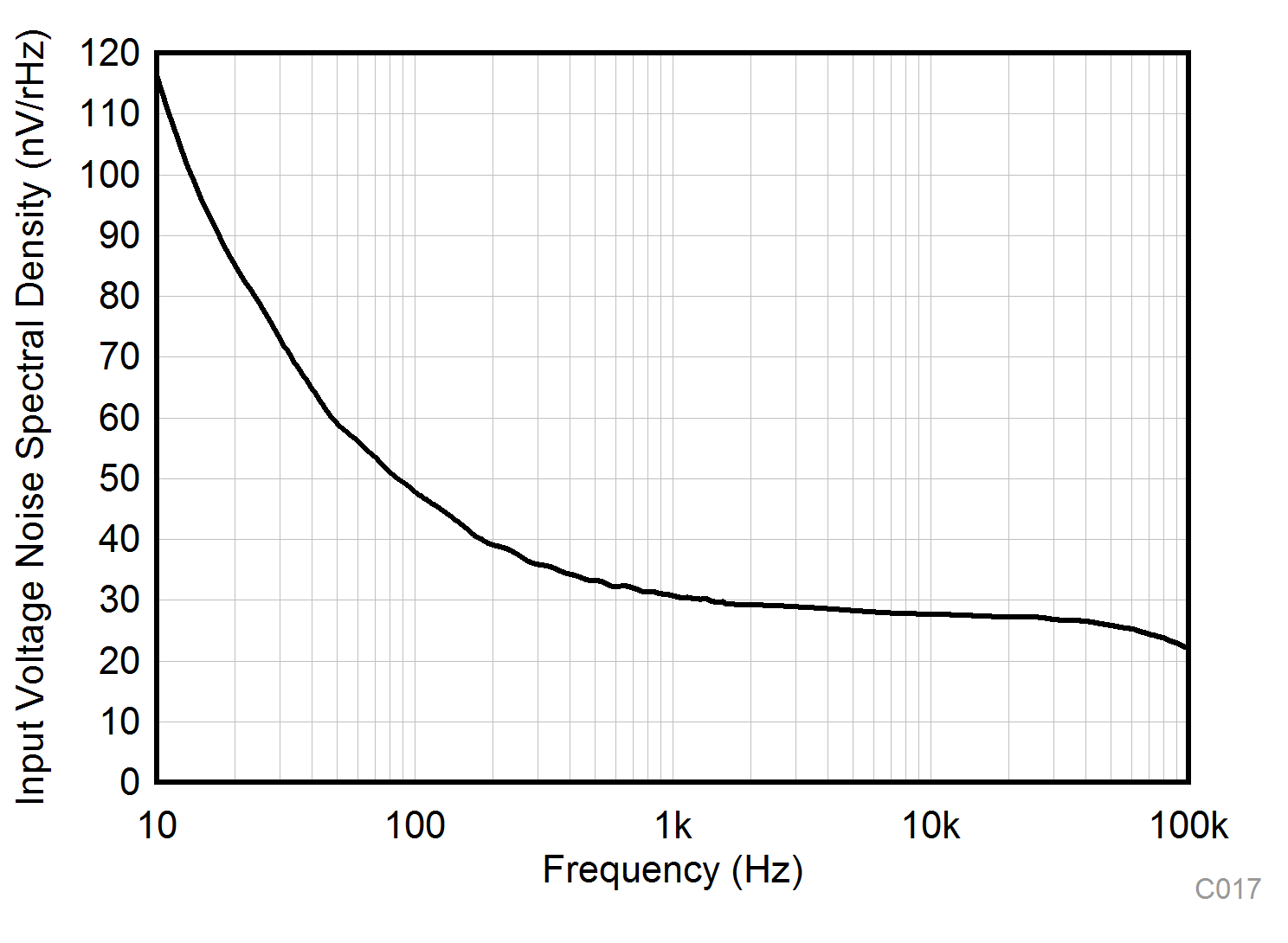 Figure 5-19 Input Voltage
Noise Spectral Density vs Frequency
Figure 5-19 Input Voltage
Noise Spectral Density vs Frequency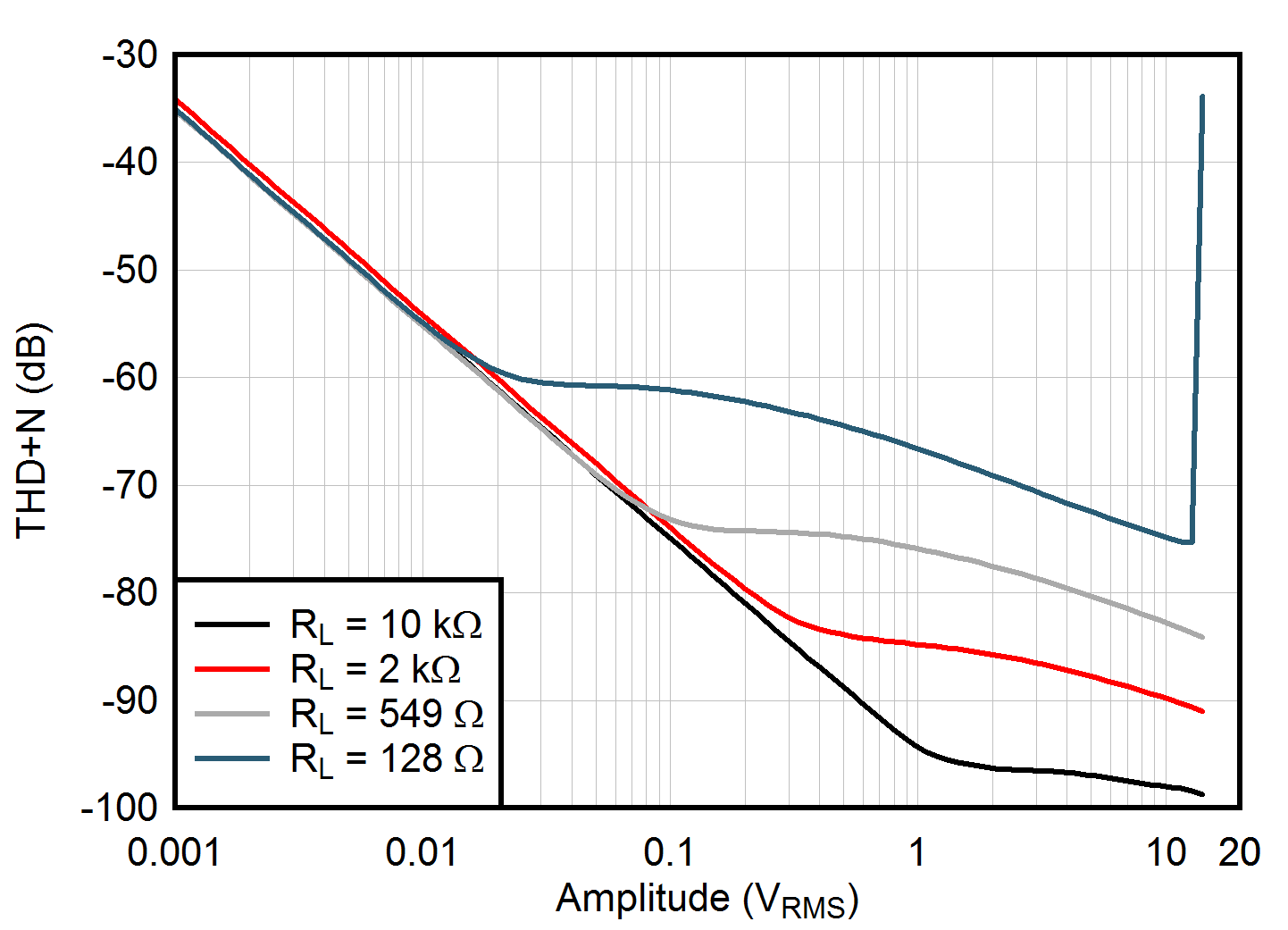 Figure 5-21 THD+N vs Output
Amplitude
Figure 5-21 THD+N vs Output
Amplitude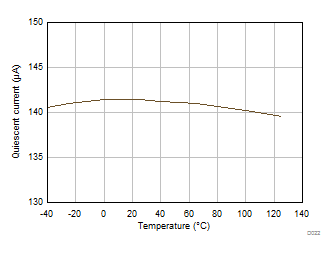 Figure 5-23 Quiescent
Current vs Temperature
Figure 5-23 Quiescent
Current vs Temperature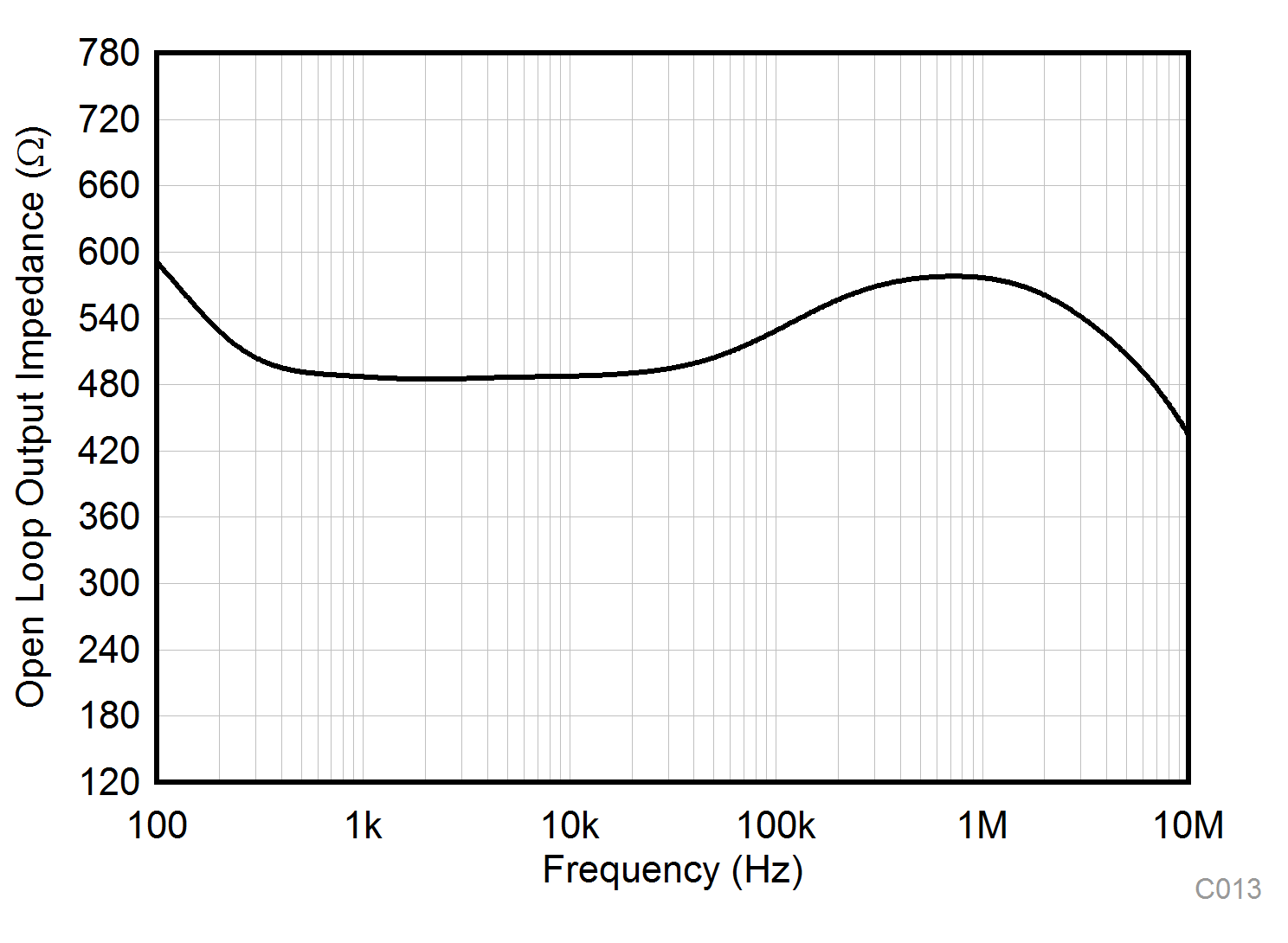 Figure 5-25 Open-Loop
Output Impedance vs Frequency
Figure 5-25 Open-Loop
Output Impedance vs Frequency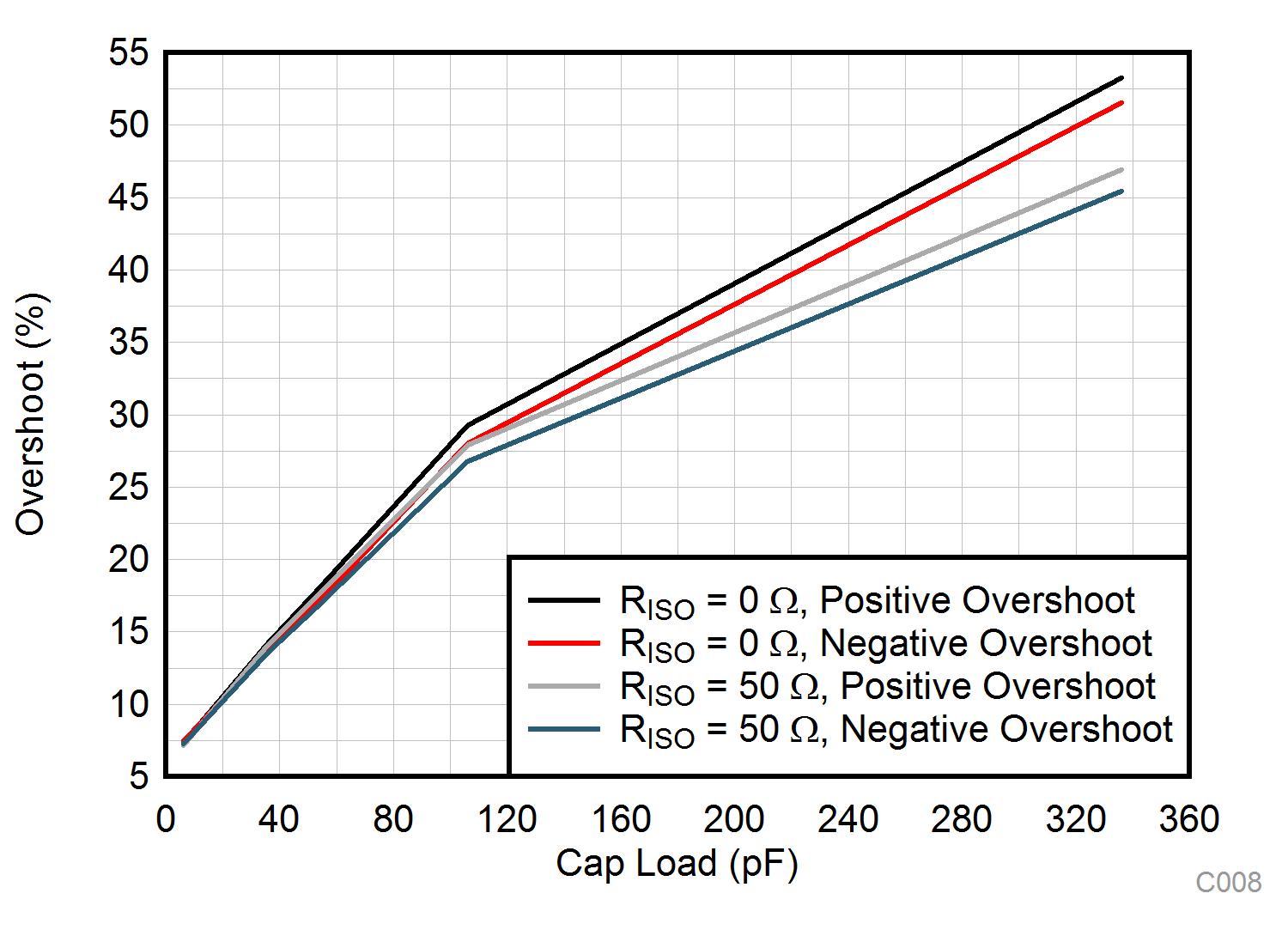 Figure 5-27 Small-Signal
Overshoot vs Capacitive Load
Figure 5-27 Small-Signal
Overshoot vs Capacitive Load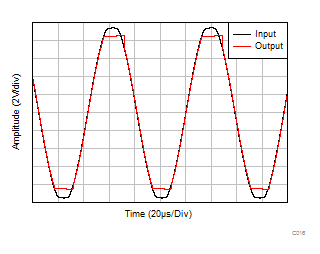 Figure 5-29 No Phase
Reversal
Figure 5-29 No Phase
Reversal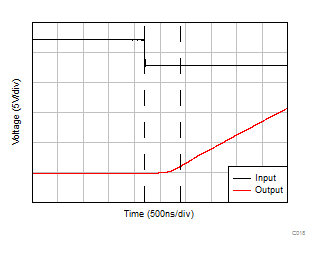 Figure 5-31 Negative
Overload Recovery
Figure 5-31 Negative
Overload Recovery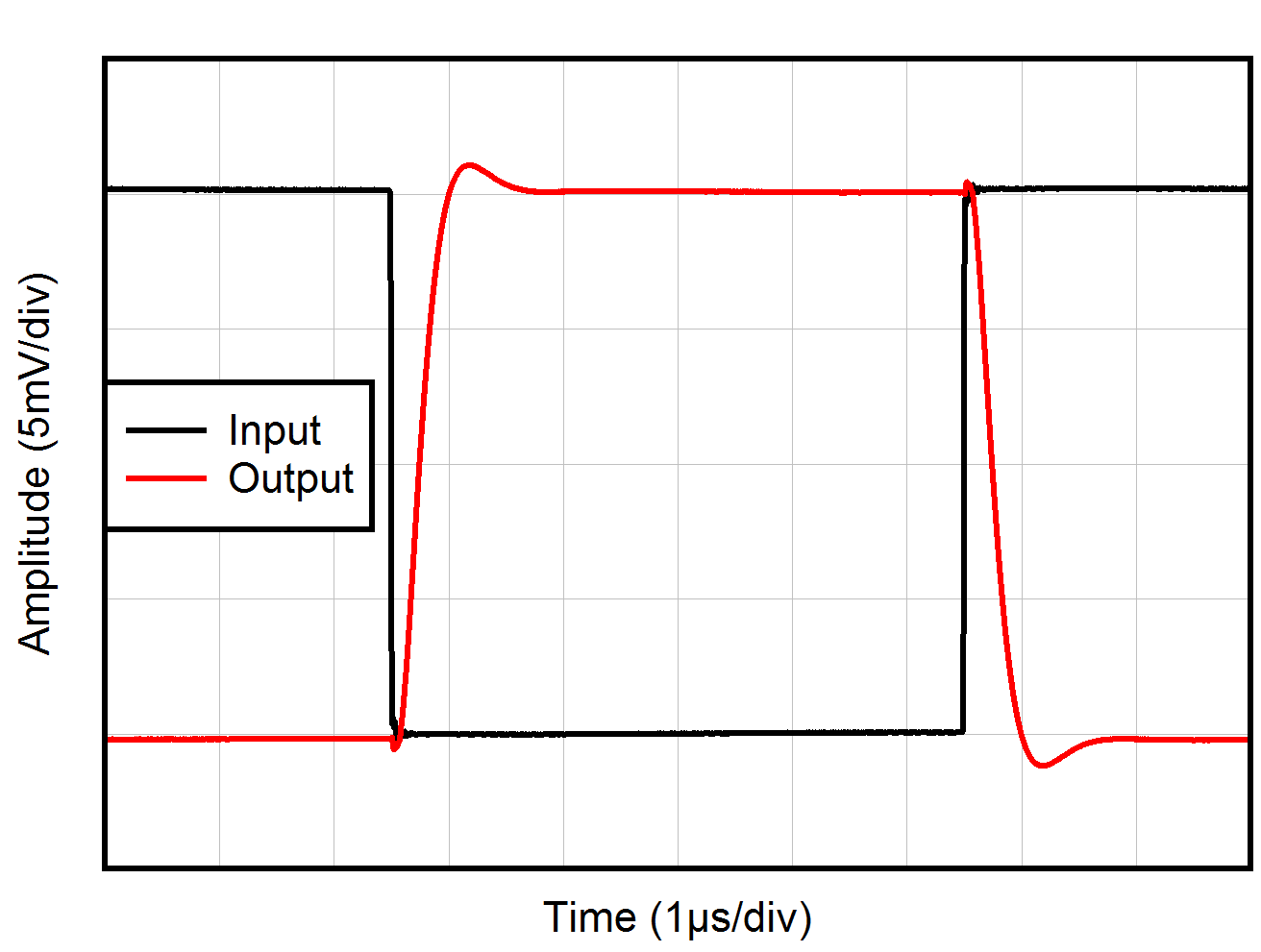
| RL =
1kΩ, CL = 20pF, G = –1, 10mV step
response |
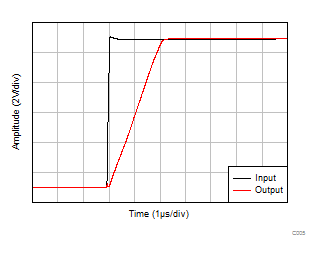 Figure 5-35 Large-Signal
Step Response (Rising)
Figure 5-35 Large-Signal
Step Response (Rising)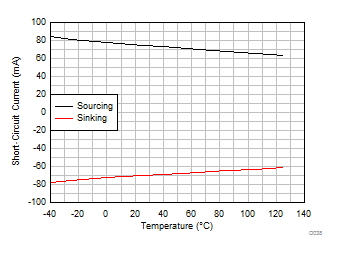 Figure 5-37 Short-Circuit
Current vs Temperature
Figure 5-37 Short-Circuit
Current vs Temperature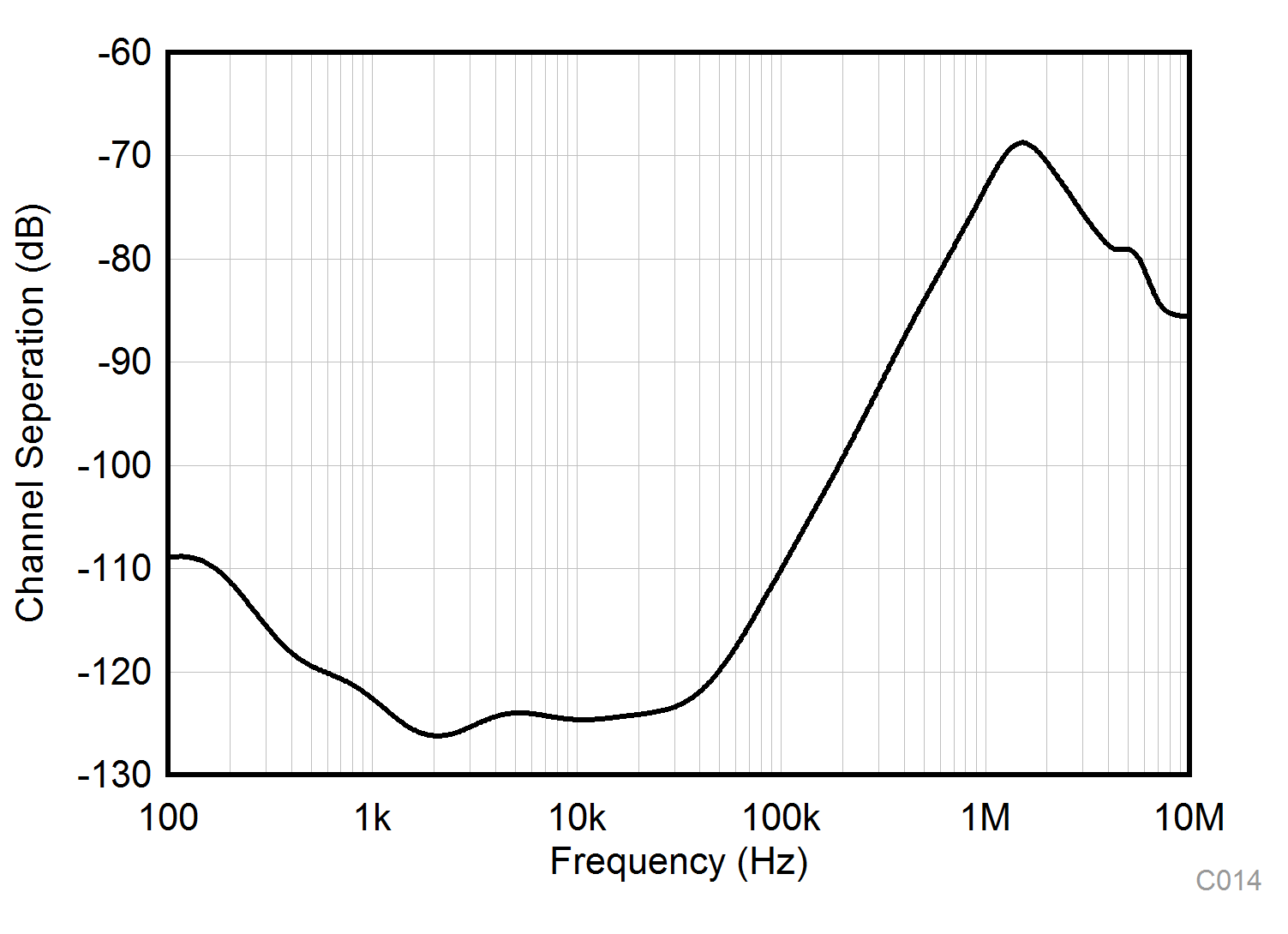 Figure 5-39 Channel
Separation vs Frequency
Figure 5-39 Channel
Separation vs Frequency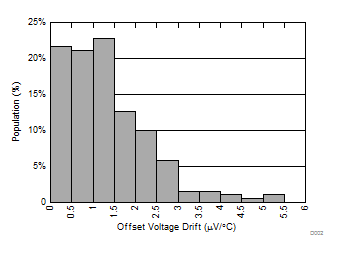 Figure 5-2 Offset Voltage
Drift Distribution
Figure 5-2 Offset Voltage
Drift Distribution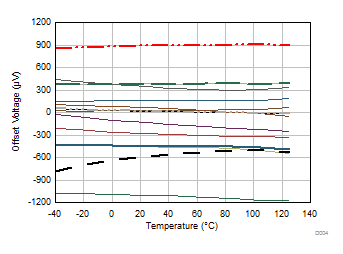 Figure 5-4 Offset Voltage
vs Temperature
Figure 5-4 Offset Voltage
vs Temperature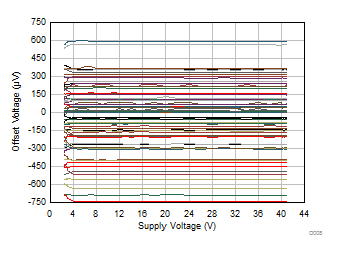 Figure 5-6 Offset Voltage
vs Power Supply
Figure 5-6 Offset Voltage
vs Power Supply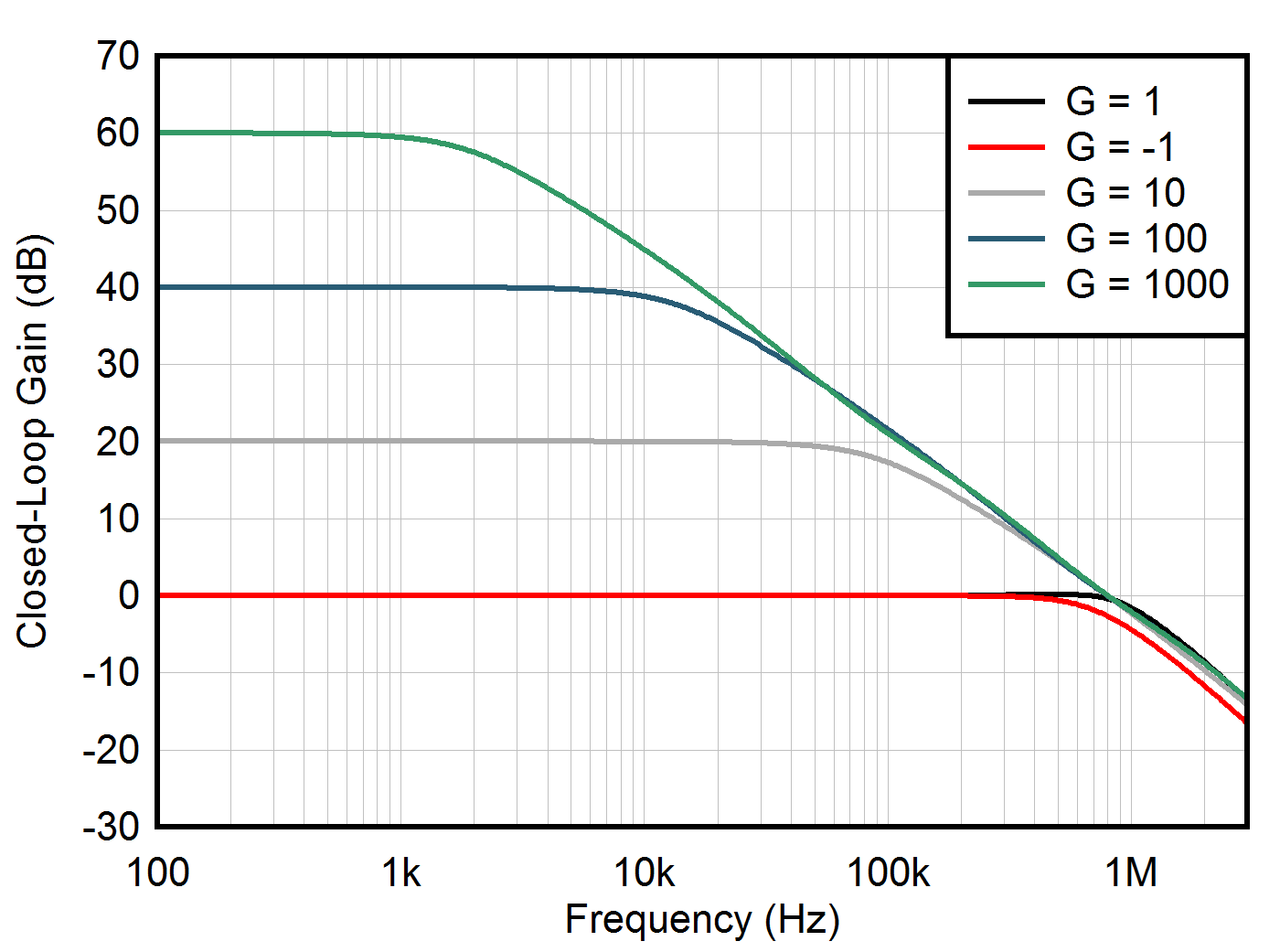 Figure 5-8 Closed-Loop
Gain and Phase vs Frequency
Figure 5-8 Closed-Loop
Gain and Phase vs Frequency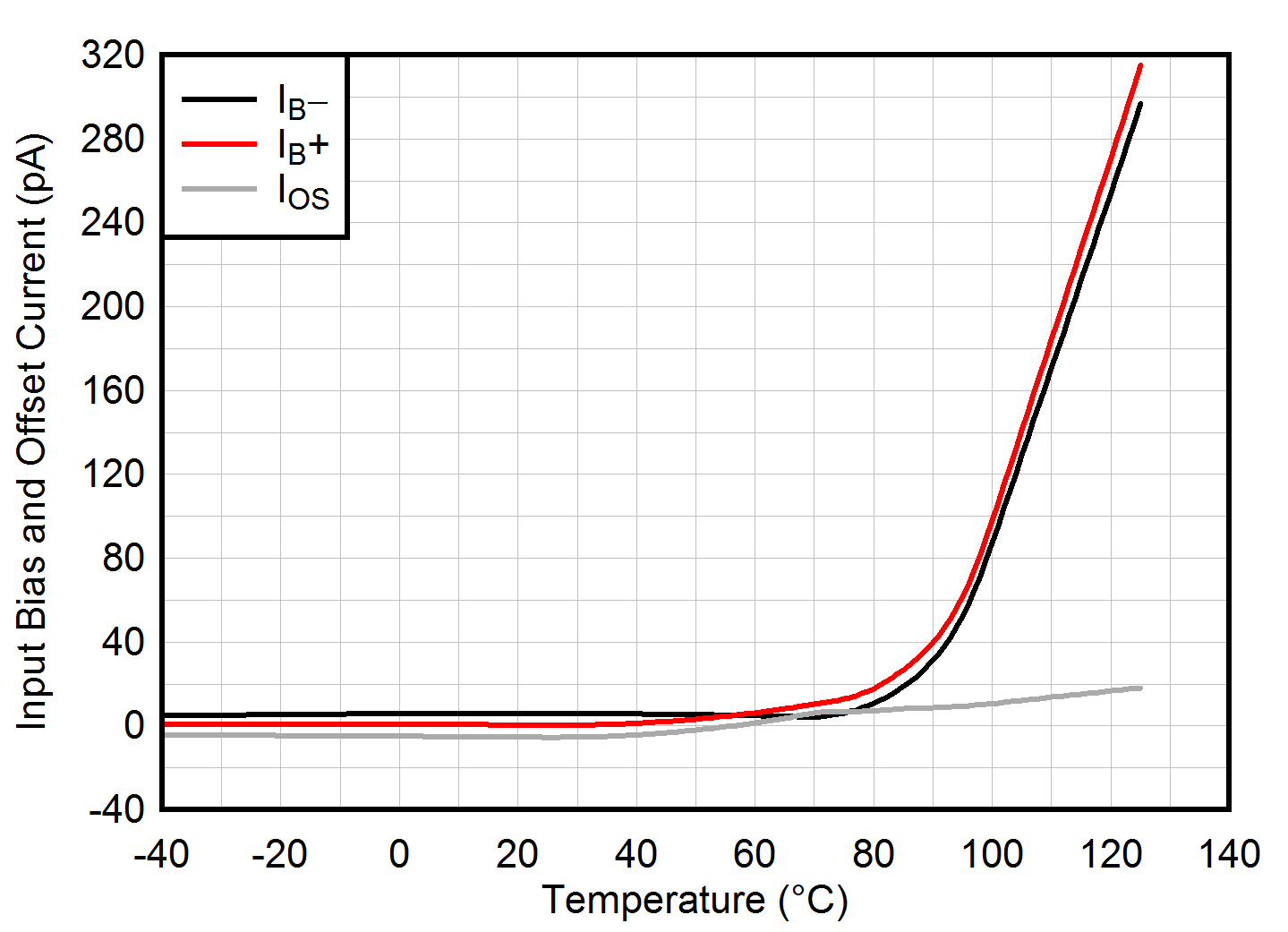 Figure 5-10 Input Bias
Current vs Temperature
Figure 5-10 Input Bias
Current vs Temperature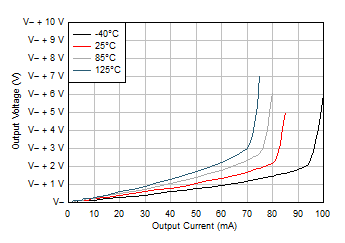 Figure 5-12 Output Voltage
Swing vs Output Current (Sinking)
Figure 5-12 Output Voltage
Swing vs Output Current (Sinking)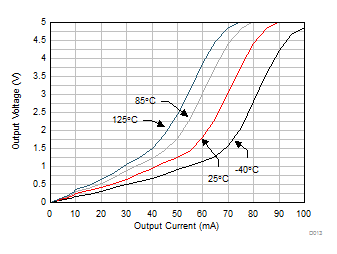 Figure 5-14 Output Voltage
Swing vs Output Current (Sinking)
Figure 5-14 Output Voltage
Swing vs Output Current (Sinking)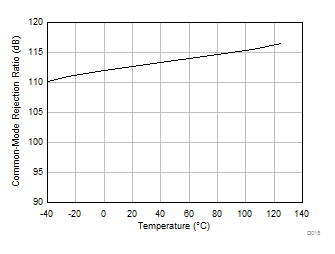 Figure 5-16 CMRR vs
Temperature (dB)
Figure 5-16 CMRR vs
Temperature (dB)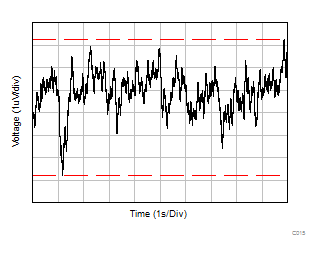 Figure 5-18 0.1Hz to 10Hz
Noise
Figure 5-18 0.1Hz to 10Hz
Noise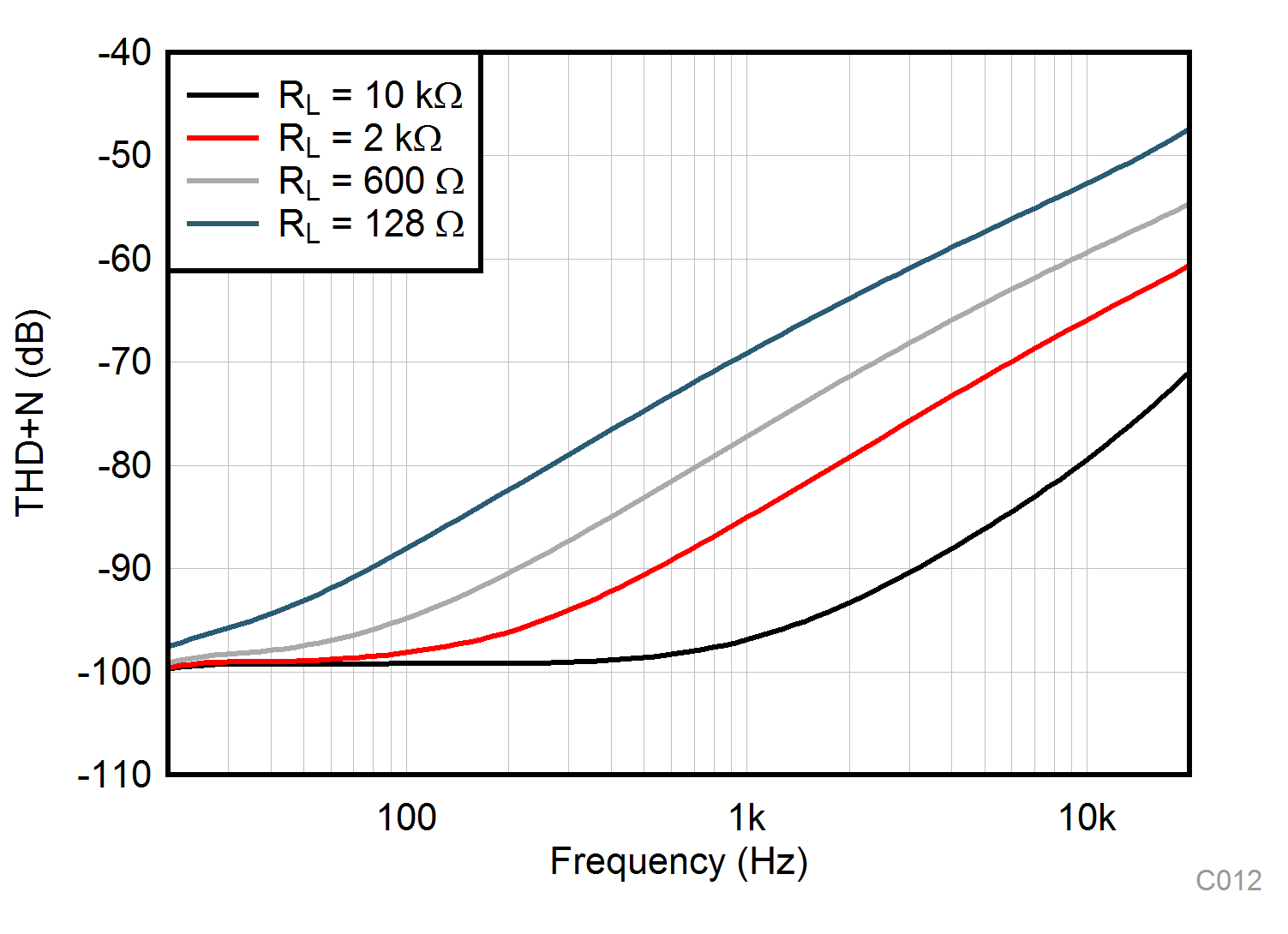
| BW = 80kHz,
VOUT = 3.5VRMS |
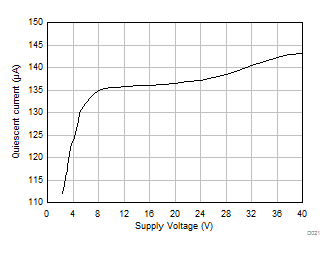 Figure 5-22 Quiescent
Current vs Supply Voltage
Figure 5-22 Quiescent
Current vs Supply Voltage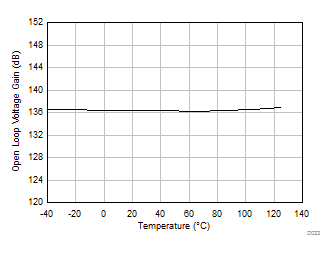 Figure 5-24 Open-Loop
Voltage Gain vs Temperature (dB)
Figure 5-24 Open-Loop
Voltage Gain vs Temperature (dB)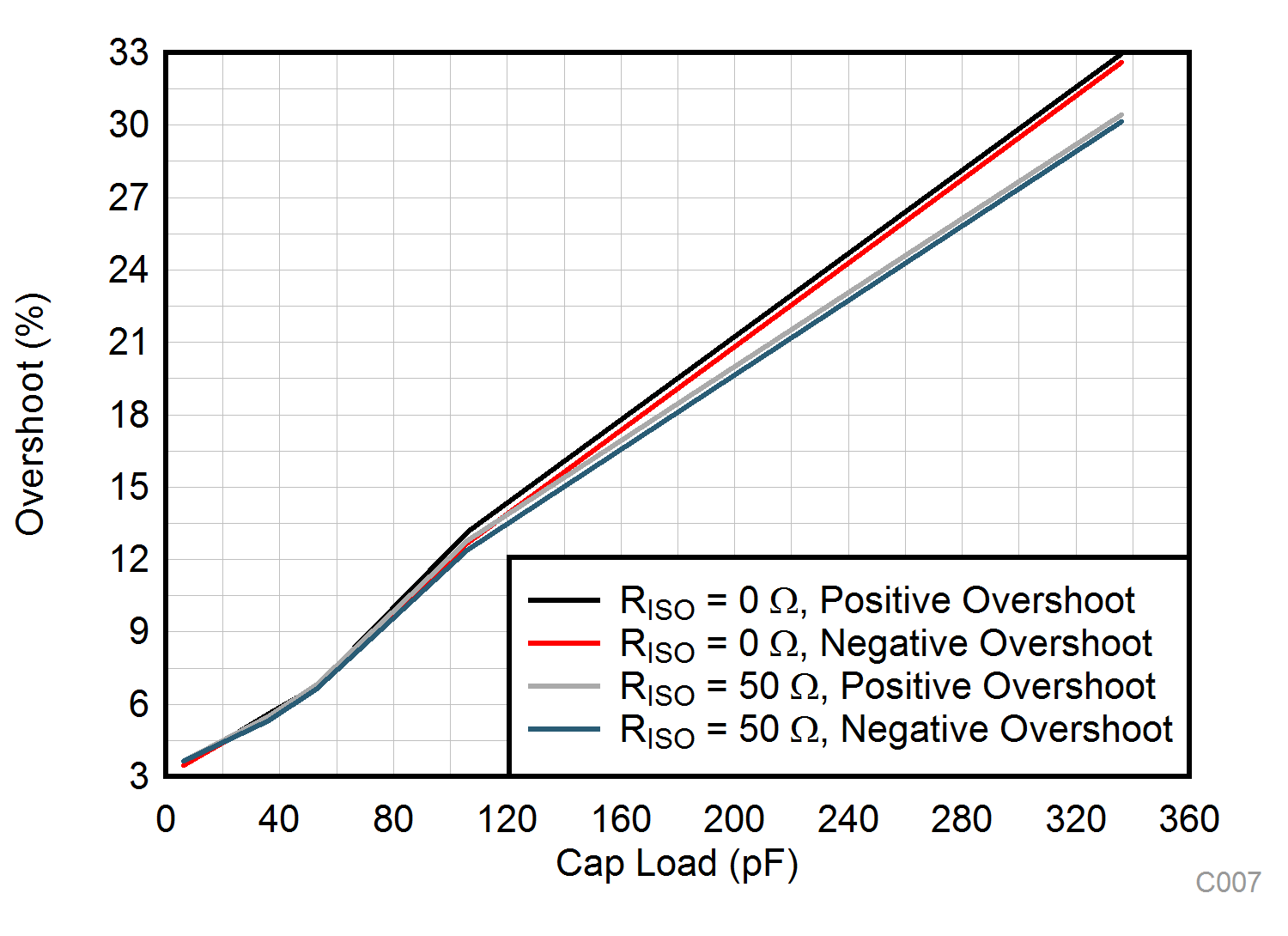
| G = –1, 100mV output step |
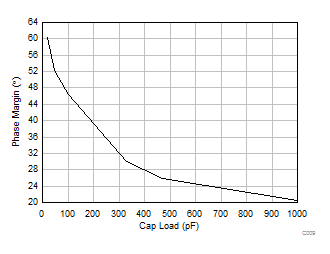
| G = –1, 100mV output step |
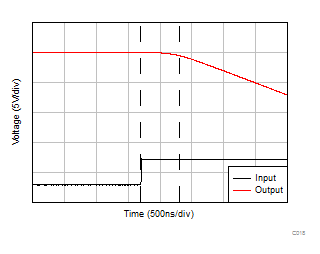 Figure 5-30 Positive
Overload Recovery
Figure 5-30 Positive
Overload Recovery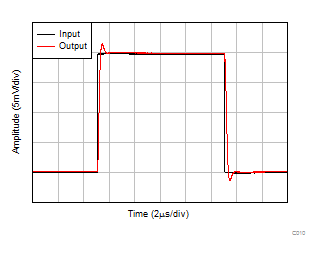
| CL =
20pF, G = 1, 20mV step response |
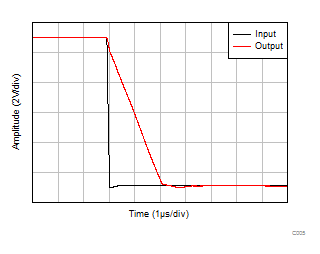 Figure 5-34 Large-Signal
Step Response (Falling)
Figure 5-34 Large-Signal
Step Response (Falling)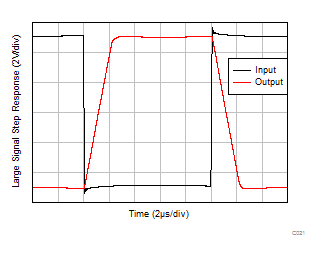 Figure 5-36 Large-Signal
Step Response
Figure 5-36 Large-Signal
Step Response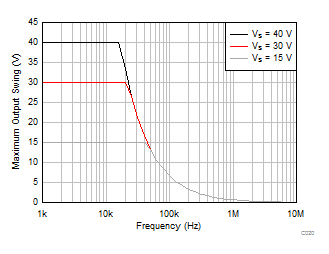 Figure 5-38 Maximum Output
Voltage vs Frequency
Figure 5-38 Maximum Output
Voltage vs Frequency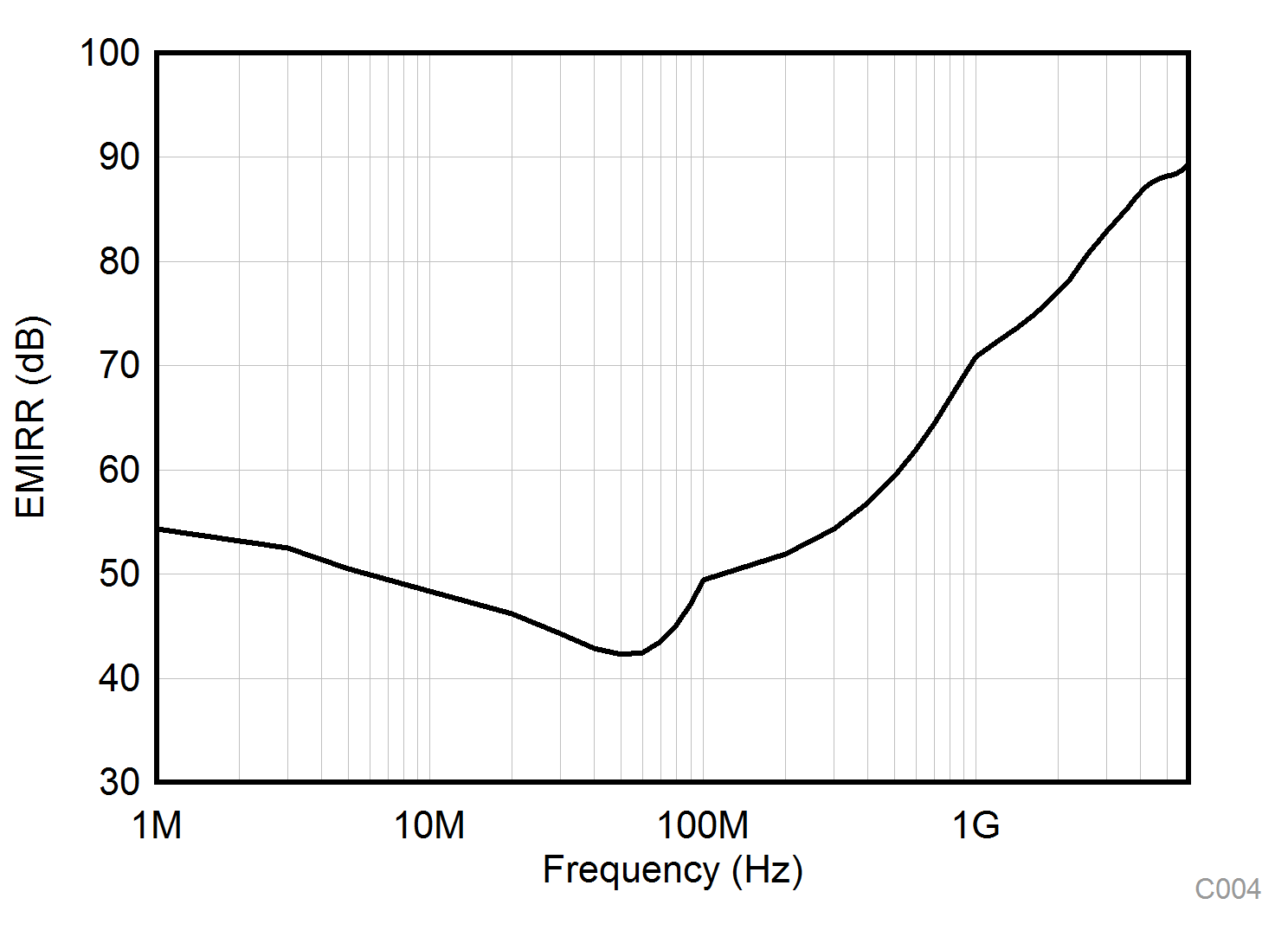 Figure 5-40 EMIRR
(Electromagnetic Interference Rejection Ratio) vs Frequency
Figure 5-40 EMIRR
(Electromagnetic Interference Rejection Ratio) vs Frequency



 Figure 5-9 Input Bias
Current vs Common-Mode Voltage
Figure 5-9 Input Bias
Current vs Common-Mode Voltage Figure 5-11 Output Voltage
Swing vs Output Current (Sourcing)
Figure 5-11 Output Voltage
Swing vs Output Current (Sourcing)




 Figure 5-23 Quiescent
Current vs Temperature
Figure 5-23 Quiescent
Current vs Temperature






 Figure 5-39 Channel
Separation vs Frequency
Figure 5-39 Channel
Separation vs Frequency



 Figure 5-10 Input Bias
Current vs Temperature
Figure 5-10 Input Bias
Current vs Temperature Figure 5-12 Output Voltage
Swing vs Output Current (Sinking)
Figure 5-12 Output Voltage
Swing vs Output Current (Sinking)




 Figure 5-24 Open-Loop
Voltage Gain vs Temperature (dB)
Figure 5-24 Open-Loop
Voltage Gain vs Temperature (dB)






 Figure 5-40 EMIRR
(Electromagnetic Interference Rejection Ratio) vs Frequency
Figure 5-40 EMIRR
(Electromagnetic Interference Rejection Ratio) vs Frequency